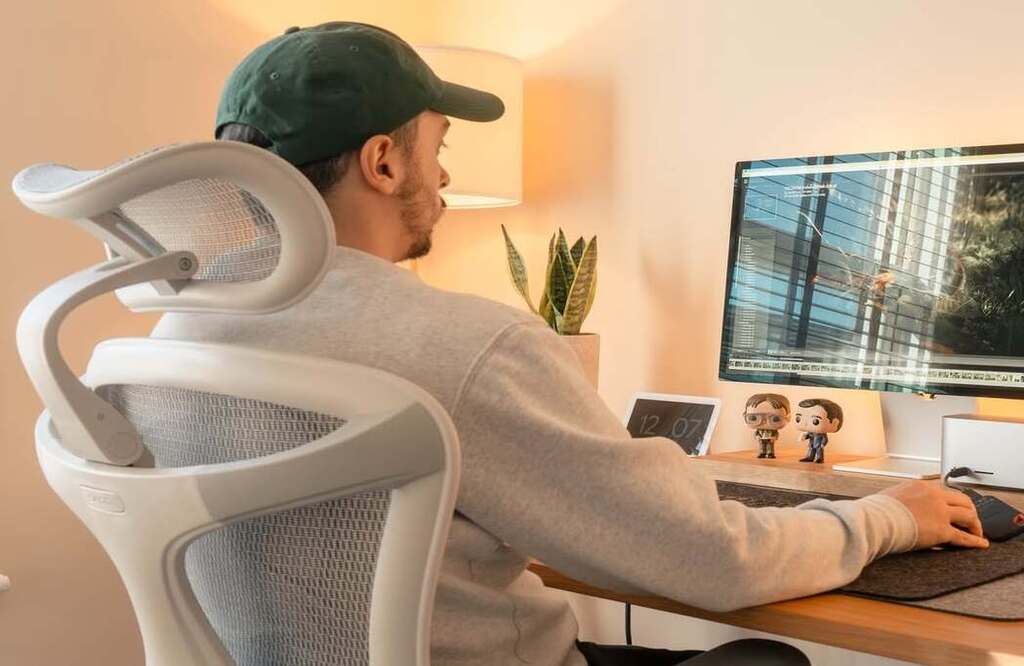Remote work was supposed to set us free — no commute, no office small talk, full control over our time. Yet in truth, many of us are quietly trading flexibility for fatigue.
Having spent over a decade advising distributed teams, I can say this with conviction: remote work doesn’t damage your health — neglect does. The problem isn’t the job itself; it’s how we do it.
The Hidden Health Risks of Sitting All Day
Let’s be honest — most home working setups are ergonomic disasters. Dining tables double as desks, kitchen stools become office chairs, and hours vanish into a blur of video calls.
According to the British Heart Foundation, prolonged sitting increases the risk of heart disease and early mortality. The UK Office for National Statistics consistently lists musculoskeletal disorders among the leading causes of work-related illness.
This isn’t simply about a sore back. Extended periods of poor posture compress the spine, reduce oxygen flow, and impair focus. Even mild discomfort can develop into chronic pain or long-term fatigue.
Standing desks won’t save you alone. What truly matters is awareness — learning to recognise when your body starts whispering before it begins to shout.
Ergonomic Fixes You Can Make in Minutes
If you spend most of your day at a desk, investing in a good ergonomic chair is one of the most worthwhile decisions you can make. A proper chair supports your spine’s natural curve, encourages movement, and reduces pressure on your lower back. Think of it as essential equipment, not a luxury.
That said, you don’t need to overhaul your entire setup to sit well — a few smart adjustments can make a remarkable difference:
- Raise your screen so your eyes meet the top third of it (a stack of books will do).
- Keep your elbows bent at roughly 90 degrees, with shoulders relaxed.
- Support your lower back with a small cushion or rolled towel — even with the best ergonomic chair, posture still matters.
- Rest your feet flat, either on the floor or on a low box.
One of the simplest yet most effective tricks is to separate your work and leisure devices. Shifting from laptop to phone forces both a postural and mental reset.
Ergonomics isn’t a one-off setup — it’s a daily habit. Check in with your body each hour: Are your shoulders tense? Are you leaning forward? Are you hunching over? Adjust before discomfort turns into pain.
Daily Movement Routines That Actually Work
Let’s stop pretending we’ll exercise “after work”. It rarely happens. What genuinely works are micro-movements — brief, consistent bursts of activity that keep the body alive.
Research from University College London has shown that short, frequent movement breaks are more effective than one intense workout in counteracting the harms of sitting.
Try this:
- Every 30 minutes, move for at least 30 seconds — stand up, stretch, roll your shoulders.
- During lunch, go for a quick walk or do some light household tasks.
- Three-minute mobility reset: chest openers, neck rolls, hip rotations.
Discipline always trumps good intentions. Set a reminder — or better still, use a simple app such as Stretchly or Move. If you wait until you feel stiff, you’ve already waited too long.
Mental and Emotional Health Habits
Remote work doesn’t just affect your posture — it reshapes your mind. Isolation, blurred boundaries, and constant availability quietly erode emotional wellbeing.
The Mental Health Foundation reports that one in four remote workers in the UK feels lonely at least once a week. That isn’t a side effect; it’s a warning sign.
Forget the token corporate “wellness webinar”. What you need is structure:
- Create a morning ritual to enter work mode — even a short walk helps.
- Define a clear finishing routine — close the laptop, change lighting, switch location.
- Protect offline hours as deliberately as meetings.
- Maintain real human contact — informal coffee chats often do more for morale than formal check-ins.
Mental resilience isn’t a nice-to-have. It’s part of your professional toolkit.
Expert Tips from Remote Professionals
Dr Emma Tarrant, Physiotherapist:
“Most people adjust their equipment, not their habits. The body thrives on variation — change position regularly.”
James O’Reilly, Software Engineer (10 years remote):
“A posture-feedback sensor changed my routine completely. It buzzes when I slump — instant awareness, instant correction.”
My own rule:
“If it isn’t scheduled, it doesn’t exist — that includes breaks, stretching, and hydration.”
Your Remote Work Health Routine
Perfection isn’t the goal — consistency is. Use this simple checklist daily:
- ☐ Screen at eye level
- ☐ Elbows at 90°, shoulders relaxed
- ☐ Stand up and stretch every half hour or so
- ☐ Get at least 15 minutes of daylight
- ☐ End the day with an offline ritual
Remote work offers freedom — but also full responsibility. Your employer may supply the laptop; you provide the discipline. Ignore that truth, and the comfort of home will quietly cost you your health.
FAQs
What are the main health risks of remote work?
Prolonged sitting, poor posture, eye strain, and mental fatigue are the most common issues remote workers face.
How can I improve my home office ergonomics?
Use an ergonomic chair, adjust screen height, keep elbows at 90°, and ensure your back is well supported.
How often should I move during the day?
Stand, stretch, or walk briefly every 30–45 minutes to reduce stiffness and boost focus.



